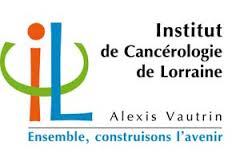Clinical and genetic landscape of treatment naive cervical cancer: Alterations in PIK3CA and in epigenetic modulators associated with sub-optimal outcome
Résumé
BACKGROUND: There is a lack of information as to which molecular processes, present at diagnosis, favor tumour escape from standard-of-care treatments in cervical cancer (CC). RAIDs consortium (www.raids-fp7.eu), conducted a prospectively monitored trial, [BioRAIDs (NCT02428842)] with the objectives to generate high quality samples and molecular assessments to stratify patient populations and to identify molecular patterns associated with poor outcome.
METHODS: Between 2013 and 2017, RAIDs collected a prospective CC sample and clinical dataset involving 419 participant patients from 18 centers in seven EU countries. Next Generation Sequencing has so far been carried out on a total of 182 samples from 377 evaluable (48%) patients, allowing to define dominant genetic alterations. Reverse phase protein expression arrays (RPPA) was applied to group patients into clusters. Activation of key genetic pathways and protein expression signatures were tested for associations with outcome.
FINDINGS: At a median follow up (FU) of 22 months, progression-free survival rates of this FIGO stage IB1-IV population, treated predominantly (87%) by chemoradiation, were65•4% [CI95%: 60•2-71.1]. Dominant oncogenic alterations were seen in PIK3CA (40%), while dominant suppressor gene alterations were seen in KMT2D (15%) and KMT2C (16%). Cumulative frequency of loss-of-function (LOF) mutations in any epigenetic modulator gene alteration was 47% and it was associated with PIK3CA gene alterations in 32%. Patients with tumours harboring alterations in both pathways had a significantly poorer PFS. A new finding was the detection of a high frequency of gains of TLR4 gene amplifications (10%), as well as amplifications, mutations, and non-frame-shift deletions of Androgen receptor (AR) gene in 7% of patients. Finally, RPPA protein expression analysis defined three expression clusters.
INTERPRETATION: Our data suggests that patient population may be stratified into four different treatment strategies based on molecular markers at the outset. FUND: European Union's Seventh Program grant agreement No 304810.
Origine : Fichiers éditeurs autorisés sur une archive ouverte
Loading...

